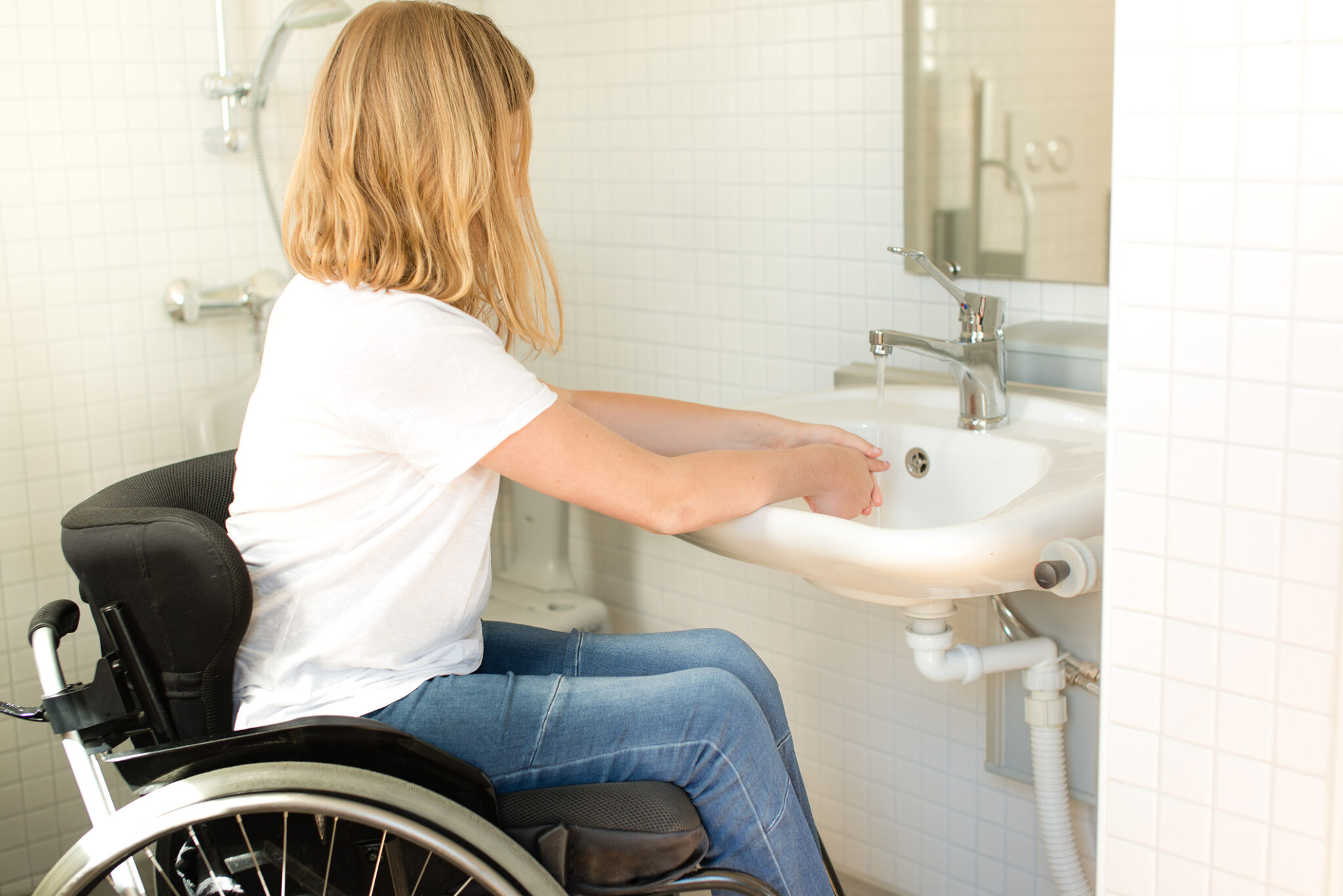ADA Regulations and Accessibility Guidelines

Handicap bathroom sink height – The Americans with Disabilities Act (ADA) sets forth specific requirements for the design and construction of public accommodations, including bathrooms, to ensure accessibility for individuals with disabilities.
Handicap bathroom sink height is typically lower than standard bathroom sink height, allowing for easier access for individuals with disabilities. Standard bathroom sink height, which you can find more about here , is generally between 30 and 36 inches from the floor.
Handicap bathroom sink height, on the other hand, is usually between 28 and 32 inches from the floor, providing a more comfortable and accessible height for individuals with limited mobility.
When it comes to bathroom sink height, the ADA establishes clear guidelines to accommodate the needs of individuals using wheelchairs or with limited mobility.
ADA Requirements
- The maximum height of a bathroom sink rim must be no higher than 34 inches above the finished floor.
- The minimum height of a bathroom sink rim must be at least 27 inches above the finished floor.
- The sink must be mounted with a maximum depth of 6.5 inches from the front edge of the rim to the backsplash or wall.
These measurements ensure that individuals with disabilities can comfortably reach and use the sink without experiencing any physical barriers.
Impact on Bathroom Design
The ADA regulations have a significant impact on the design of bathrooms in public accommodations.
Incorporating handicap bathroom sink height regulations is essential for accessible and comfortable bathroom design. Menards bathroom vanity with sink offers a wide selection of vanities that cater to these requirements, ensuring ease of use for individuals with disabilities. By adhering to these standards, you can create a bathroom space that is both functional and inclusive.
- Bathrooms must be designed with sufficient space to allow for wheelchair access to the sink.
- Sinks must be mounted at the appropriate height to accommodate individuals of different heights and abilities.
- Mirrors must be placed at an angle that allows individuals using wheelchairs to see themselves.
By adhering to these guidelines, architects and designers can create bathrooms that are accessible and inclusive for all.
Ergonomic Considerations for Handicap Bathroom Sinks: Handicap Bathroom Sink Height

Ergonomics plays a crucial role in determining the optimal sink height for individuals with disabilities. The design of handicap bathroom sinks should adhere to ergonomic principles to ensure comfort, accessibility, and functionality.
Reach
- The sink should be positioned within easy reach for individuals using wheelchairs or with limited mobility.
- The height of the sink should allow users to comfortably reach the faucet and controls without straining or overextending.
- Adjustable sink heights can accommodate a wider range of users with varying reach abilities.
Grip
- The sink handles and controls should be designed for easy grip and operation.
- Lever-style handles or touchless faucets can be more accessible for individuals with limited hand strength or dexterity.
- Adequate space around the sink allows for comfortable hand positioning and movement.
Posture
- The sink height should promote proper posture while using the sink.
- The sink should be high enough to prevent users from bending over excessively or straining their backs.
- Adjustable sink heights allow users to customize the height for optimal comfort and posture.
Universal Design Principles
- Handicap bathroom sinks should follow universal design principles to ensure accessibility for all users.
- Adjustable sink heights, accessible controls, and adequate space around the sink create a more inclusive and user-friendly environment.
- Universal design benefits not only individuals with disabilities but also users of all ages and abilities.
Design and Installation Best Practices

Designing and installing handicap bathroom sinks requires careful consideration to ensure accessibility, comfort, and safety. Here are some best practices to follow:
Choosing Appropriate Materials
Choose durable and easy-to-clean materials such as ceramic, stainless steel, or solid surface for the sink and countertop. These materials are resistant to wear and tear and can withstand frequent use.
Fixtures and Accessories
Select fixtures and accessories that meet ADA regulations, such as lever-style handles for faucets and soap dispensers. Consider installing grab bars or support rails near the sink for added stability.
Drainage and Water Flow
Ensure proper drainage by installing a P-trap and drainpipe that are large enough to handle the water flow. Use a faucet with a laminar flow to reduce splashing and make it easier for users to control the water temperature.
Accessibility Features, Handicap bathroom sink height
Provide adequate knee space under the sink to allow for wheelchair access. Install a roll-under sink with a cutout in the front for wheelchairs to fit underneath.
